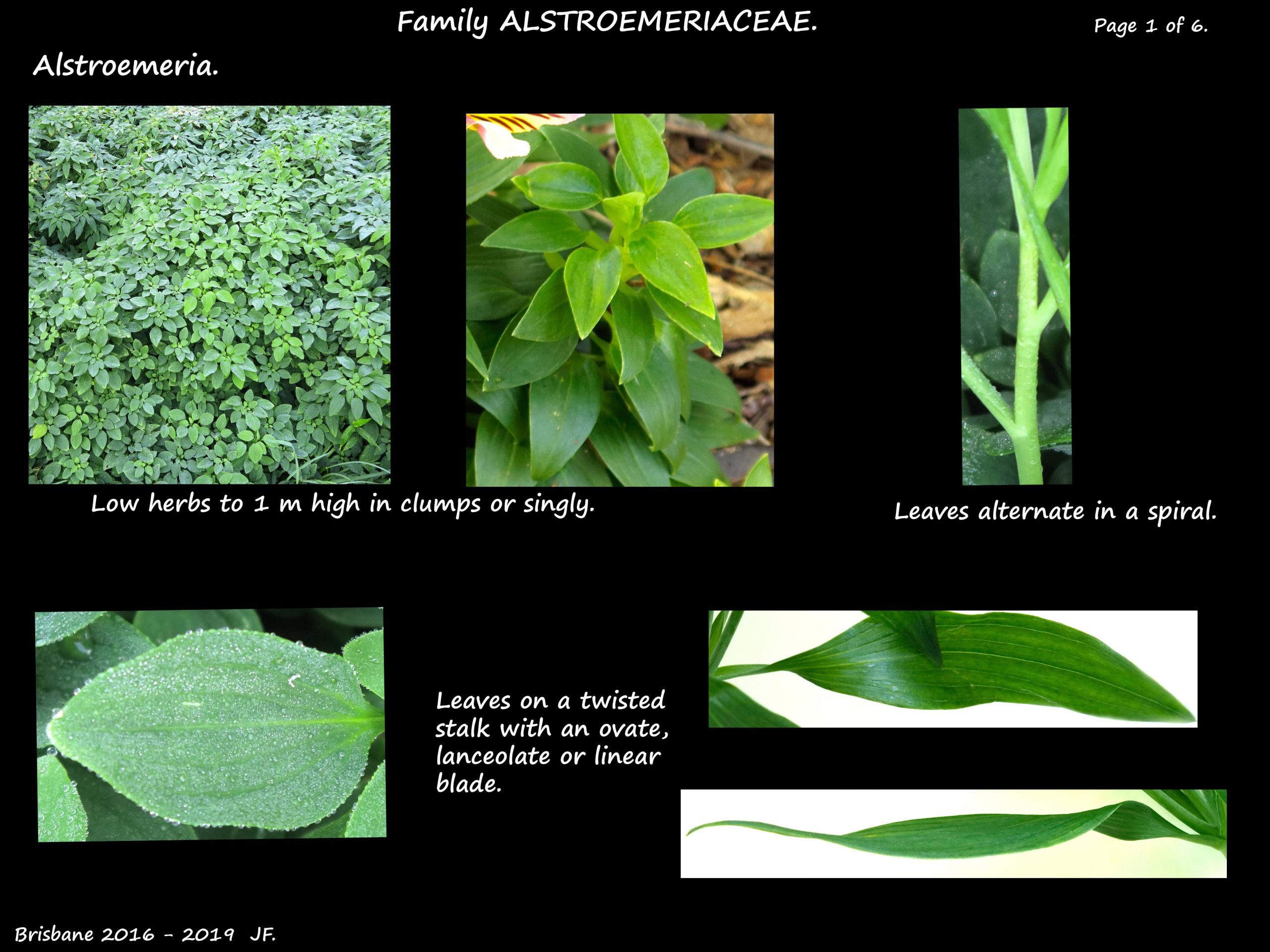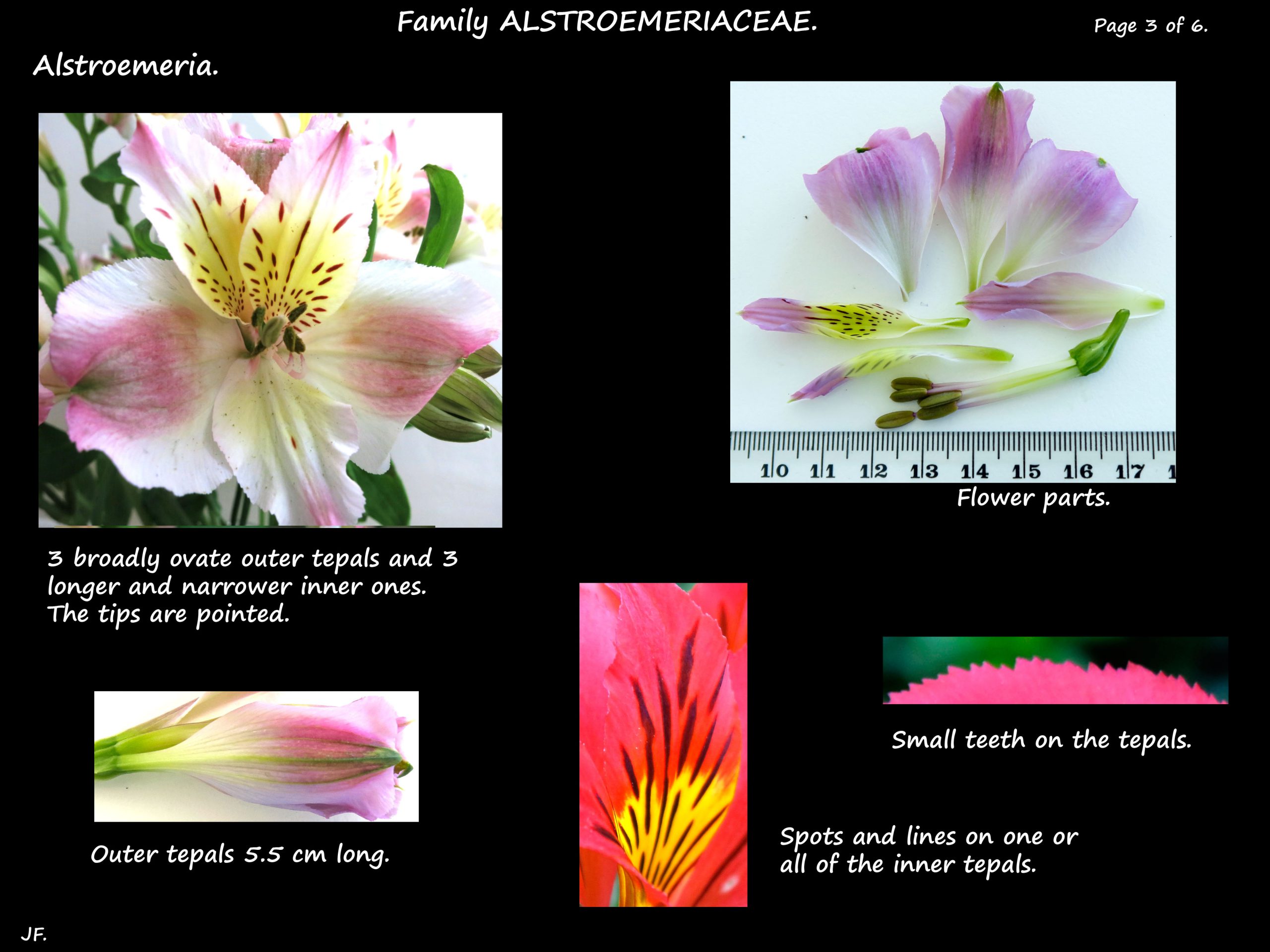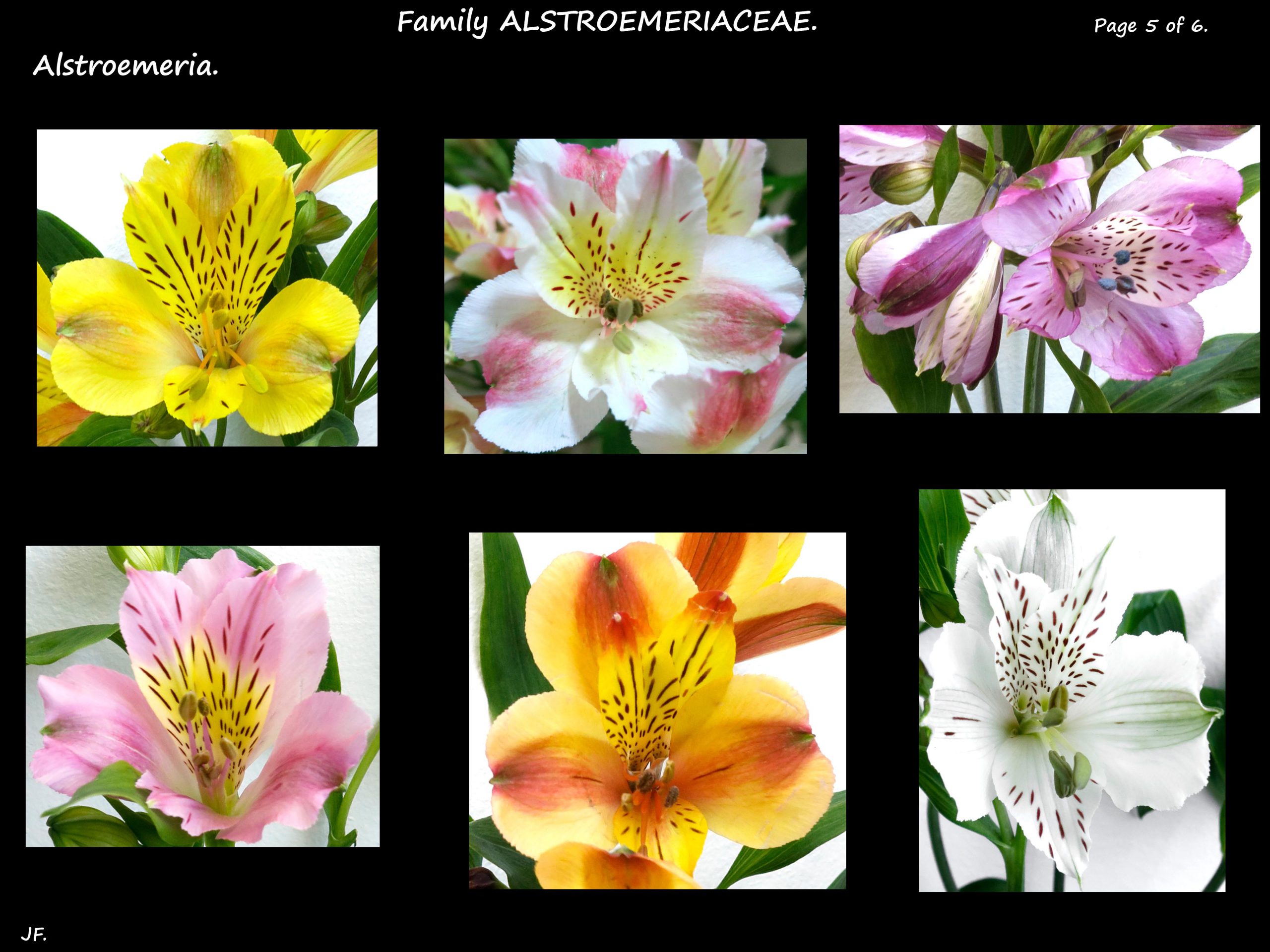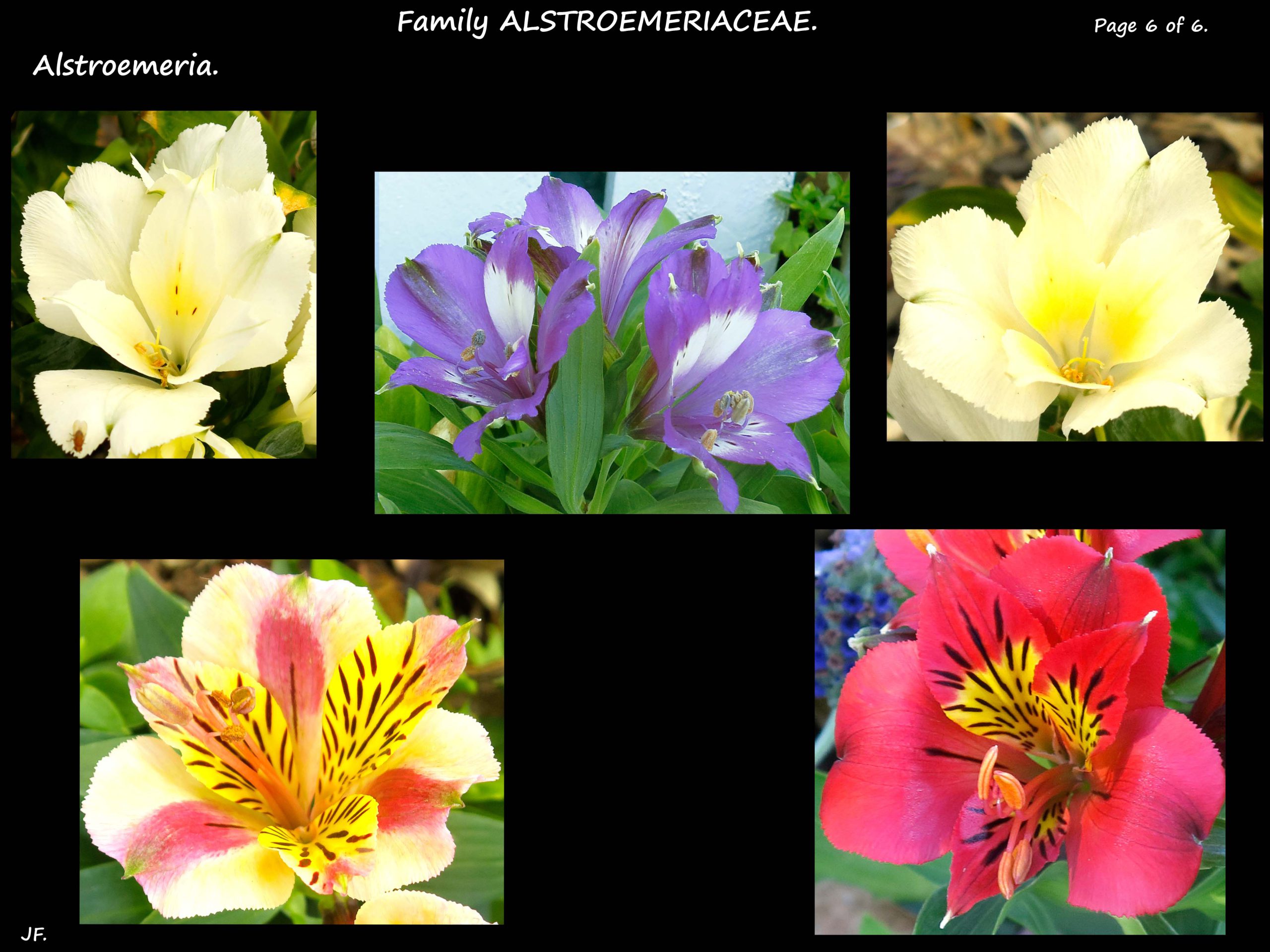Alstroemeriaceae family.
There are 3 or 4 genera with 165 – 254 species with 2 naturalised in Queensland.
Commonly known as Peruvian lily or Parrot lily they are seen in gardens and as cut flowers.
Erect or climbing herbs with rhizomes and tubers.
Leaves are alternate and spirally arranged either along the stem or in a rosette.
Leaf arrangement can also be alternate in 2 ranks.
They are simple, ovate, lanceolate or linear and have simple hairs.
In most species the petiole is partially or wholly twisted so the blade is twisted
or upside down (resupinate).
Inflorescences are mostly umbels with 2 to 6 flowers whose stalks arise from a common point.
They are terminal and can be branched.
There are leaf-like bracts.
Flowers are bisexual.
The perianth has 6 separate tepals in 2 similar or different appearing whorls.
The outer 3 tepals are up to 5 cm long.
The inner 3 are often shorter and with a narrowed base forming a nectiferous claw.
A wide range of colours in reds, oranges, purples and green or white.
They have stripes or spots in darker colours especialy the inner tepals.
There are 6 straight or curving stamens in 2 whorls.
The anthers are always pseudo-basifixed.
(The top of the filament is surrounded by the anther but not fused to it.)
Anthers dehisce inwards or sideways via longitudinal slits or by apical pores.
The ovary is inferior with 3 (1 – 4) carpels and 3 (rarely 1) locules with many ovules.
The single apical style has a 3 lobed stigma.
The fruit are mostly loculicidal capsules up to 5 cm long or berries.
They have ribs down the sides and an apical beak.
There are many hybrids and up to 200 cultivars.
J.F.








